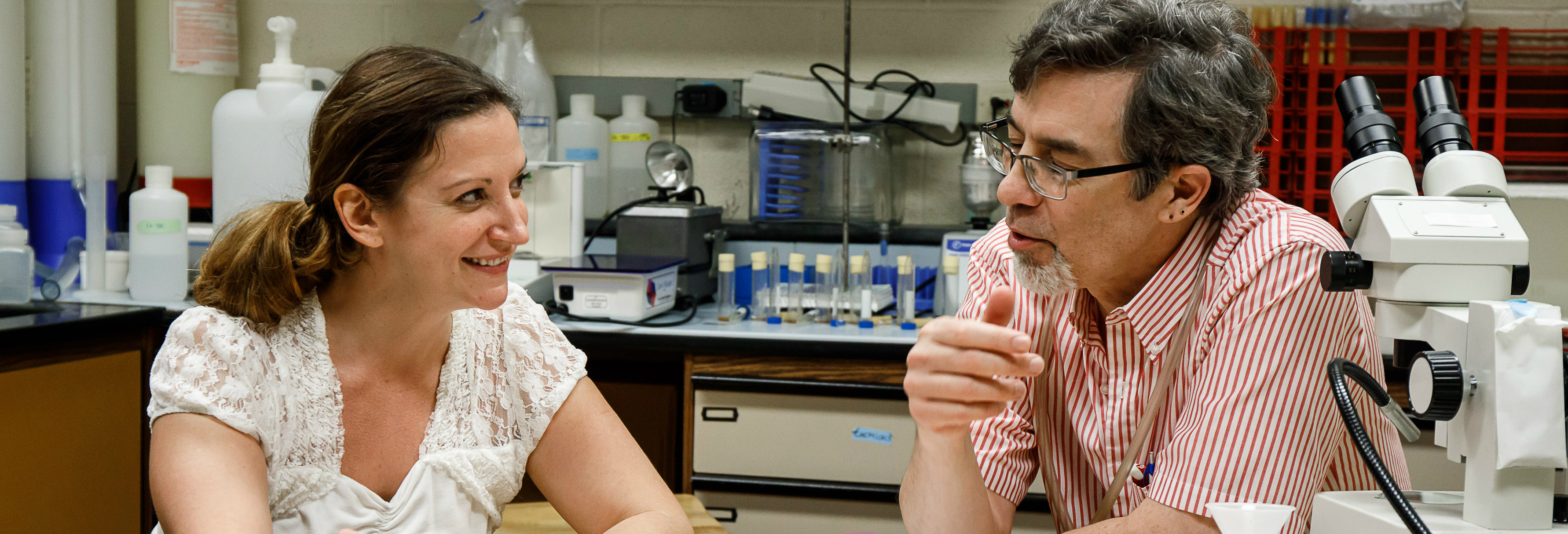Leanna Marie Altenburg ‘18
Transient DNA Transformation of Drosophila melanogaster Embryos Through Electroporation.
Major & Minor: Biochemistry
Hometown: Palmerton PA
Project Advisor(s): Dr. Christopher J. Jones
Tell us about your research.
I am currently working on a genomic engineering project. I am utilizing the CRISPR Cas 9 system in the model organism Drosophila melanogaster simultaneously with the method of plasmid delivery and transfer, electroporation. Our goal is to instill a stable transformation in the F1 progeny of the electroporated embryos.
How did it materialize? (E.g., did you pitch the idea and choose a faculty member, or did they come to you with an idea?)
Originally, I came to Dr. Jones and said, “ I want to work with you. What kind of projects do you have?” He told me about electroporation and CRISPR and I was hooked.
What was the best part about working with your faculty advisor? What valuable insights did they bring to the research process?
This is the “re” in research. Do things right the first time and take care in preparation. If you make a mistake, pick up and do it again. Get right back on the horse so to speak. Sometimes “mistakes” and unexpected turns yield more, even better results than one could have imagined.
What was your biggest obstacle?
The biggest obstacle was moving forward with the project without optimization. I am a perfectionist, so it was difficult to keep chugging along with less than ideal results.
What was your biggest takeaway from this experience?
I have become familiar with restriction digests, gel electrophoresis, caring for stock volumes of fruit flies, facilitating crosses, electroporation, plasmid transformation, expression and purification and engineering synthetic guide RNA vectors for CRISPR CAS 9 systems; all of which will help me build a foundation in molecular biochemical research.
What was the result of your research?
The electroporation method worked at low levels for transferring plasmids with a fluorescent marker into Drosophila embryos. The vector containing synthetic guide RNA was engineered through a series of techniques, including: transformation, gel purification, digestion and ligation. The plasmid was verified through an enzymatic digestion and gel electrophoresis. We are currently attempting to electroporate with the engineered CRISPR vector and screen F1 progeny.
Now that SOAR is over, do you plan to expand upon your research? If so, where would you like to see it go?
Yes I have expanded this project and am continuing with Honors Research this year. I would like to get the electroporation to work with CRISPR and create a new mutant in Drosophila.
In your own words, how do you feel about being rewarded this opportunity? Why should other students take advantage of the SOAR program?
I am eternally grateful for the opportunity to conduct research at Moravian, and I encourage any student considering this option.

